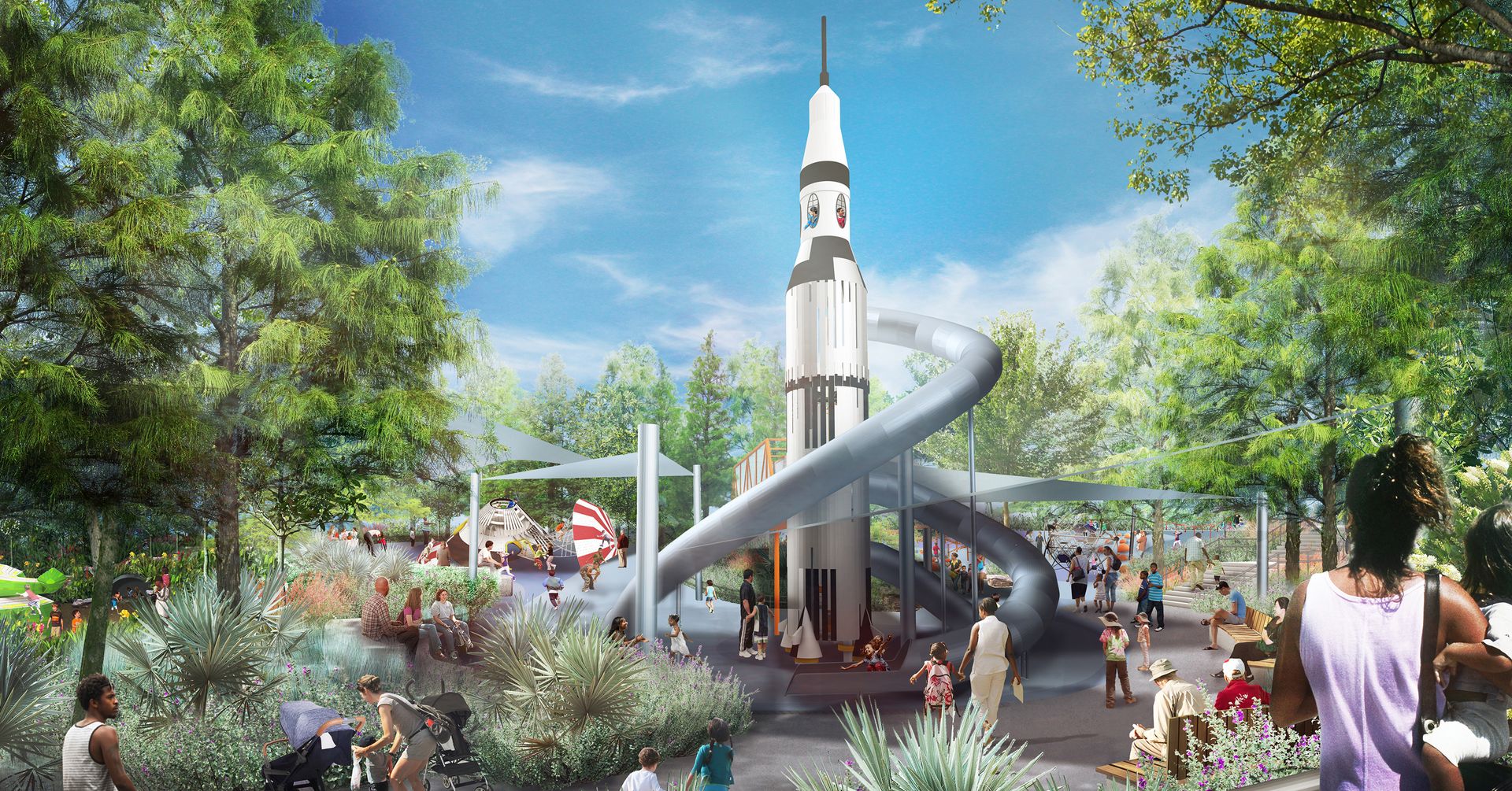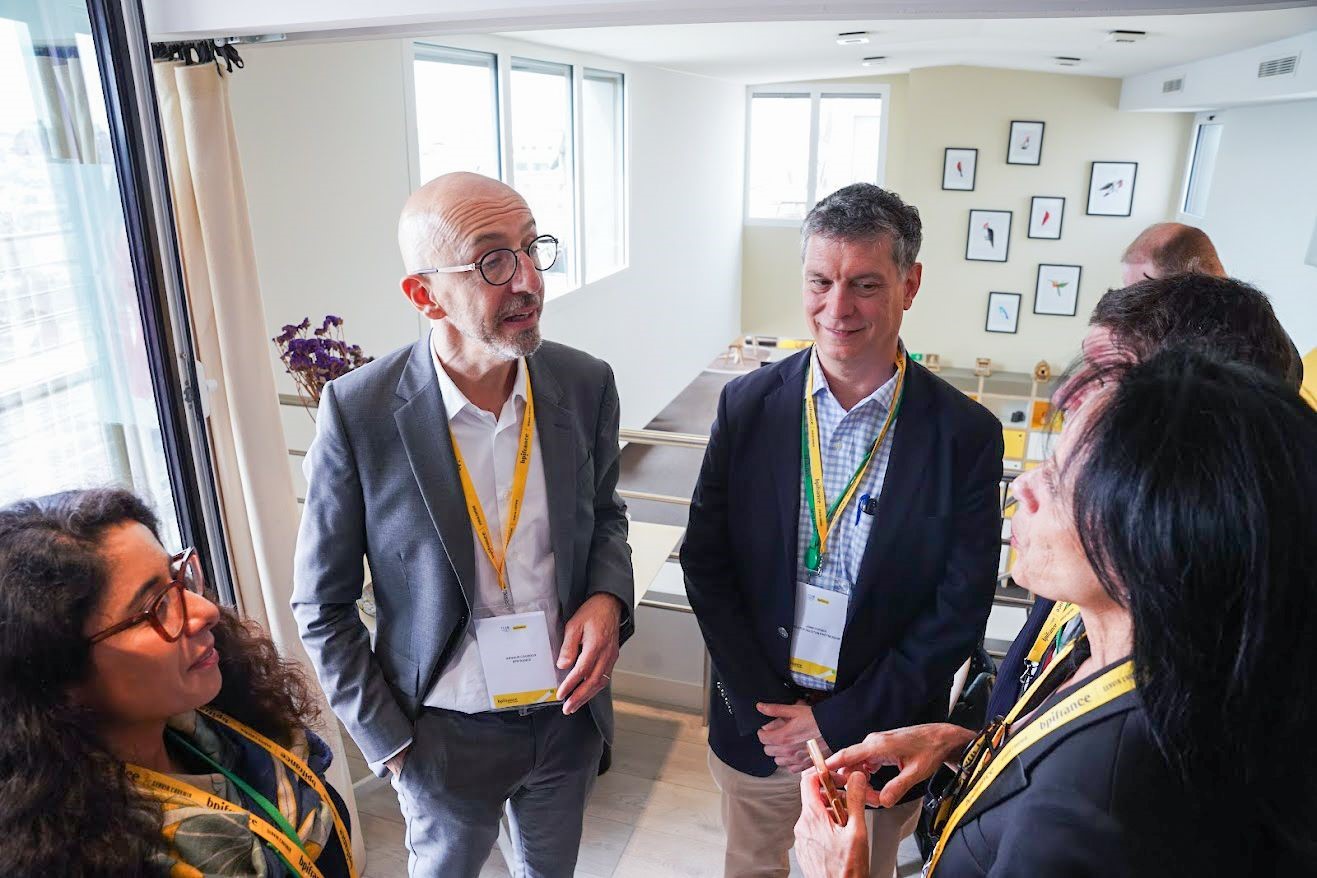How the Houston Region Is Increasing Its Green Footprint
Published Apr 20, 2023 by Taylor Tatum
Community leaders are prioritizing increasing green space across the Houston region to improve quality of life and build a more sustainable future. In honor of Earth Day, we’re highlighting a few projects that showcase the region’s commitment.
Over 12,000 trees are located within Hermann Park, and a $52 million project will add more to that number. The highlight of the renovation project is The Commons, a 26-acre play garden designed to inspire and engage young minds with a space-themed area that includes a play layout resembling a splashdown capsule, parachute and rocket launch with slides and climbing structures.
“We want there to be a sense of discovery, with a real diversity of types of play and levels of challenge. Spaces for different kids’ abilities and moods so they can choose their own adventure,” Jack Ohly, Associate Principal at Michael Van Valkenburgh Associates and Lead Landscape Architect on the Hermann Commons Project, told the Houston Chronicle.
In addition to the new playground, the renovation project also features expanded family picnic areas, a dog park, and more shaded areas with the incorporation of 1,200 new trees and 45,000 new plants. The massive project was made possible by the support of hundreds of Houstonians, with the largest contribution coming from longtime zoo and park supporter Kathrine G. McGovern. The newly renovated park is expected to open in early 2024.
Hermann Park’s renovation project isn’t the only project underway that aims to increase the region’s green footprint. Montgomery County has recently announced plans for a nearly 400-acre park near its Woodforest community. Though design is still in its early stages, Fish Creek Regional Park plans to offer a host of amenities, including a community center, hiking and equestrian trails, a nature and outdoor education center, and various sports fields.
According to a statement from Burditt Consultants LLC, the company that won the contract for the park’s amenities, the goal of the project is to preserve and sustain the area’s natural resources, including wildlife and watersheds, while still creating a park that will be a benefit to everyone in the region.
These recent park developments and their focus on conservation and sustainability align closely with the city’s own goals of improving Houston’s green space. In tandem with its Climate Action Plan, the city of Houston has launched an initiative in partnership with NRG to plant 100,000 trees as part of a larger goal: planting 4.6 million trees by 2030. This initiative will improve air quality, reduce heat, and bring improvements to different communities across the region.
This is in addition to other reforestation efforts happening at Halls Bayou, which saw almost 600 trees planted earlier this year, and Memorial Park, where acres of native prairie grass and trees were planted on its new land bridge. In Harris County’s Precinct 2, roughly 500 trees were planted as part of the Bay Area Boulevard Reforestation Project’s goal to plant a total of 1,000 trees.
Learn more about Houston’s green spaces.
 The Houston Report
The Houston Report



















